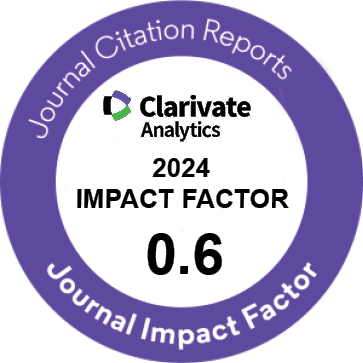| Original Article | |
| Oxidative Stress Markers in Early Pregnancy Loss: A Case-Control Study | |
| Shahnaz Torkzahrani1, Padideh Janati Ataei1, Mehdi Hedayati2, Soheila Khodakarim3, Zohre Sheikhan1, Moniresadat Khoramabadi1, Akramsadat Sadraei4 | |
| 1Department of Midwifery and Reproductive Health, School of Nursing and Midwifery, Shahid Beheshti University of Medical Sciences, Tehran, Iran 2Cellular and Molecular Endocrine Research Center, Research Institute for Endocrine Sciences, Shahid Beheshti University of Medical Sciences, Tehran, Iran 3Department of Epidemiology and Biostatistics, School of Public Health, Shahid Beheshti University of Medical Sciences, Tehran, Iran 4Department of Obstetrics and Gynecology, Loghman Hospital, Shahid Beheshti University of Medical Sciences, Tehran, Iran |
|
|
IJWHR 2019; 7: 061-066 DOI: 10.15296/ijwhr.2019.10 Viewed : 4255 times Downloaded : 3327 times. Keywords : Oxidative stress, Pregnancy, Spontaneous abortion |
|
| Full Text(PDF) | Related Articles | |
| Abstract | |
Objectives: Evidence suggests that oxidative stress (OS) plays a prominent role in the pathophysiology of pregnancy complications in women. The present study was conducted to determine the levels of OS markers in early pregnancy loss and to compare the results with those in healthy pregnant women. Materials and Methods: A total of 32 women with early pregnancy loss and 32 healthy women in the first trimester of pregnancy, with similar demographic characteristics entered this study as the cases and controls. Serum levels of malondialdehyde (MDA), total antioxidant capacity (TAC), uric acid, and bilirubin levels were determined in both groups. The data obtained were then analyzed and compared between the groups using the independent samples t test and Mann-Whitney U test. Results: The 2 groups matched in terms of personal-demographic characteristics including mother’s age, father’s age, gravidity, and body mass index (BMI). MDA levels increased significantly in the women with spontaneous abortion compared to the healthy pregnant women (4.35±1.47 vs. 3.42±1.68 µM/L; P = 0.026) and TAC decreased significantly in the cases compared to the healthy controls (552.34±212.79 vs. 1003.23±1168.68 U/mL; P = 0.040). Uric acid and bilirubin levels did not differ between the groups. Conclusions: The results of this study provides further evidence on the effect of increased OS on the incidence of early spontaneous abortion in the first trimester of pregnancy. High serum MDA levels and low TAC during pregnancy were 2 risk factors for spontaneous abortion. The present findings support the hypothesis that OS plays a key role in the etiopathogenesis of spontaneous abortion. Further studies are required for assessing the preventive role of antioxidant therapy in this complication. |
Cite By, Google Scholar
Google Scholar
PubMed
Online Submission System
 IJWHR ENDNOTE ® Style
IJWHR ENDNOTE ® Style
 Tutorials
Tutorials
 Publication Charge
Women's Reproductive Health Research Center
About Journal
Publication Charge
Women's Reproductive Health Research Center
About Journal
Aras Part Medical International Press Editor-in-Chief
Arash Khaki
Mertihan Kurdoglu Deputy Editor
Zafer Akan























